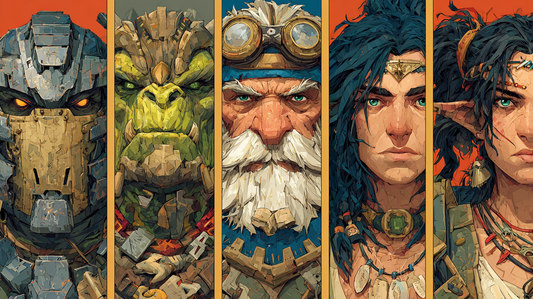Gaming 2025: The Fall of AAA Giants and the Rise of AA
For years, AAA video games were seen as the pinnacle of entertainment: movie-sized budgets, teams of hundreds, and massive marketing campaigns. They were the untouchable temples of gaming. But in 2025, that era is showing cracks.
The numbers speak for themselves: since 2022, the industry has lost more than 35,000 jobs. Companies like EA, Ubisoft, Embracer, and Riot have shut down studios, canceled projects, and cut thousands of positions. Electronic Arts even announced the cancellation of the much-anticipated Black Panther game and the closure of Cliffhanger Studios. Multimillion-dollar projects are no longer a guarantee of success, and the weight of these productions has become unsustainable.
The Wear and Tear of the AAA Model
Why is this happening?
-
Skyrocketing costs: developing a AAA game can exceed $200 million. If it doesn’t sell tens of millions of copies, the project is considered a failure.
-
Lack of freshness: many players feel that AAA titles recycle formulas, sequels, and ever-larger open worlds that innovate less with each release.
-
Maximum risk: a single mistake can sink an entire studio.
AAA games still exist, of course, but they no longer dominate as before. Today’s gamer is looking for more than cutting-edge graphics: they want fresh ideas, unique experiences, and games with soul.
The Rise of AA Games
Amid the storm, the so-called AA games are shining: projects with mid-sized budgets, smaller teams, and much greater creative freedom.
Two recent examples prove this:
-
Clair Obscur: Expedition 33, by Sandfall Interactive, an RPG with stunning artistic design already being mentioned as a Game of the Year contender.
-
Split Fiction, by Hazelight (published under EA Originals), another AA title that has won over both critics and players.
Both show that you don’t need to spend hundreds of millions to earn recognition, community, and awards. What matters is taking risks with new ideas and connecting with players.
Shawn Layden, former CEO of PlayStation, put it simply: “Developers are tired of doing the same thing for so long. The future needs more variety, and AA can deliver it.”
Why AA Connects More Today
-
Accessible price: often cheaper than a AAA game.
-
Shorter development times: players can enjoy them sooner, without waiting six or seven years between releases.
-
Creativity and risk: they can test new mechanics or bold themes without risking billions.
-
Closer to the community: smaller studios mean player feedback has real impact.
In other words, AA has become the sweet spot between the scale of AAA and the freshness of indie games.
The Immediate Future
According to recent surveys, only 15% of developers currently work in AAA studios, while 10% are already in AA and 32% are in indie projects. The balance is shifting.
This doesn’t mean AAA will disappear: sagas like GTA VI, Call of Duty, or Final Fantasy will still make headlines. But it does mean the creative space and player attention are moving to other leagues.
AAA studios face a critical choice: reinvent themselves or be crushed by their own weight.
How Dark Samurai Sees It
The fall of the giants is not an ending—it’s a rebirth. AA games are like forgotten warriors: lighter, faster, and free to fight their own way.
The gamer of 2025 has more choices than ever before, and that’s a good thing. Between a colossal AAA and an experimental indie, there is now fertile ground where games are born that balance ambition with freshness.
Bye,
Dark Samurai




